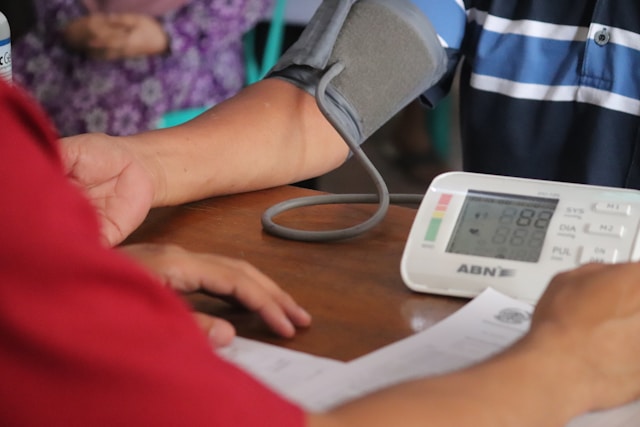Back
Sep 3, 2024
Ozempic uncovered: how GLP-1 agonists are changing weight-loss forever

Dr Jarrad Van Zuydam | Sports Physician
Introduction
You’ve probably heard of Ozempic by now. The hot new weight-loss drug is on everyone's lips and shrinking hips from Hollywood stars to your neighbour down the dip. Believe it or not, Ozempic and its friends (other drugs in the same family) have become so popular that they’re single-handedly boosting Denmark's economy! That’s right—the Danish company that makes Ozempic has seen its profits soar, all because these drugs are making waves in the world of weight loss and diabetes management. But what are these “miracle drugs”, and how do they actually work?
What are GLP-1 agonists?
There is a lot of fancy medical jargon around these drugs but the way they work is relatively simple. GLP-1 is a hormone that comes from your gut when you eat. Its job? To help your body keep your blood sugar steady and tell you when you're full. Think of GLP-1 as your body’s natural traffic cop, keeping everything in balance.
Now, GLP-1 agonists are drugs that mimic this hormone's effects. They help your body lower blood sugar, make you feel full faster, and even lose weight. Some of the popular ones you might have heard of include Ozempic (that’s semaglutide), Trulicity (dulaglutide), and Saxenda (liraglutide).
How do these drugs work?
Here’s where the magic happens. These drugs help your body in a few key ways:
Release the insulin! They tell your pancreas to release more insulin, but only when your blood sugar is high. It's like having a smart thermostat that only turns on the heat when it’s freezing outside.
Calm down, glucagon! Another hormone called glucagon likes to raise your blood sugar, especially when you're not eating. GLP-1 agonists politely tell glucagon to buzz off, so your blood sugar stays steady.
Slow down, stomach. These drugs slow the process of food moving from your stomach to your small intestine. This makes you feel full longer, so you're less likely to reach for that extra snack or second helping.
Tell your brain you’re not hungry. GLP-1 agonists also have a direct line to your brain, where they send the message, “Hey, we’re full here!” This helps you eat less without feeling deprived.
What are the benefits?
These drugs are like the Swiss Army knives of the medicine world—we seem to discover extra benefits on a weekly basis!
Control blood sugar. They help people with type 2 diabetes keep their blood sugar levels in check, which can lower the risk of complications.
Help you lose weight. Many people on these drugs lose weight—sometimes a lot. In one extensive study, people taking semaglutide lost nearly 15% of their body weight!
Good for your heart. Some studies suggest these drugs can also help protect your heart, which is great news if you're worried about things like heart attacks or strokes.
Help protect your kidneys. There’s also evidence that these drugs can help keep your kidneys healthier, which is especially important for people with diabetes.
“The easy way out?” Think again!
Some people argue taking drugs like Ozempic is just an “easy way out” and that losing weight should require hard work and effort. But here’s the thing: losing even a little weight can actually make a big difference. For many people, shedding a few kilos can give them the boost they need to make those healthy lifestyle changes they've been trying so hard to stick to, like eating better and getting more active. In fact, lifestyle changes are always prescribed in conjunction with the medication to enhance the beneficial effects and maintain the results over time. Resistance exercise in particular is essential while taking the medication to prevent the loss of muscle.
Remember, the health benefits of staying active and eating well don’t stop with weight loss. Regular exercise and a balanced diet can improve mood, boost energy levels, and reduce the risk of many diseases. So, using a medication like Ozempic can be a kick-start, not a shortcut, to a healthier life.
The not-so-great stuff
Of course, no drug is perfect, and GLP-1 agonists do come with a few downsides:
Tummy troubles. The most common side effects are nausea, vomiting, and diarrhoea. Thankfully, these symptoms usually get better as the body adjusts.
Rare but serious risks. There’s a slight risk of pancreatitis (inflammation of the pancreas) and possibly thyroid problems, though these are pretty rare. If you have a history of these issues, make sure your doctor knows.
Not cheap. These drugs can be expensive, especially if your insurance doesn’t cover them. Let’s hope the prices come down over time as new players enter the market and generics become available.
Needles—eek! Most of these drugs are injections, which might not be your thing if you hate needles. But don’t worry—there’s now a pill form of one of them, semaglutide, for those who prefer not to poke themselves.
A lifelong commitment: This isn’t a one-time deal. To keep the weight off, most people will need to stay on medication for the long haul. If you stop taking the drug, there’s a good chance the weight could creep back on. It’s a bit like cancelling your gym membership—you might see those results fade away.
The bottom line
GLP-1 agonists are making headlines for good reasons—they help control blood sugar, support weight loss, and even have some extra perks for your heart and kidneys. But, like any drug, they’re not without their downsides. Whether they’re right for you depends on your health needs, your comfort level with needles, and whether your wallet can handle it.











